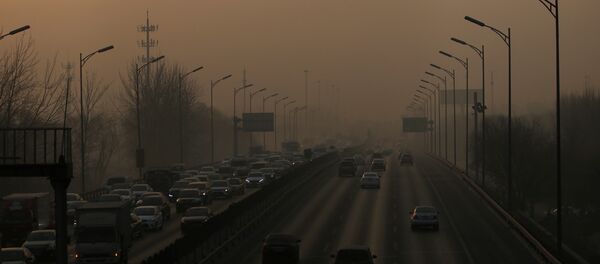"Last night, flight SU200 [Moscow Sheremetyevo to Beijing] again defied Beijing's smog," China's Huanqiu Shibao newspaper wrote. "After an unsuccessful first attempt to land, the Airbus A330 swung around and tried again, safely landing at 12:36 am, arriving just 6 minutes late," the paper added.
Chinese media and social media users have since spread a screenshot of an online airport schedule showing the Russian plane lit up in green (successfully landed) amid a sea of red 'canceled' flights.
Aeroflot's SU200 only flight to manage landing in smoggy Beijing between 24:00-3:00 on Tuesday in third victory over haze since 2014 pic.twitter.com/0aUQAGiweq
— CCTVNEWS (@cctvnews) 20 декабря 2016 г.
Social media users also recalled a similar 'heroic flight' taking place in 2014. At that time, Flight SU200 made eight loops over the course of half an hour over Chinese Inner Mongolia until easterly winds blew away strong smog in the Chinese capital.
Russian AEROFLOT SU200 made 8 circles in 1.5 hours before landing in Beijing on 2:09am Sun due to heavy haze. pic.twitter.com/UcmNITaPmm
— People's Daily,China (@PDChina) 26 октября 2014 г.
On Monday, the administration of Beijing Capital International Airport announced a 'red' alert for severe air pollution. By 6 pm local time, Beijing Capital International Airport announced the cancelation of 359 flights. Since Friday, most flights to the airport have been canceled.
China's coastal cities have been known for producing massive amounts of air pollution, partly because the country uses coal-burning power plants, but also because China serves as the so-called 'workshop of the world', producing trillions of dollars-worth of industrially-produced goods that are exported around the world.



